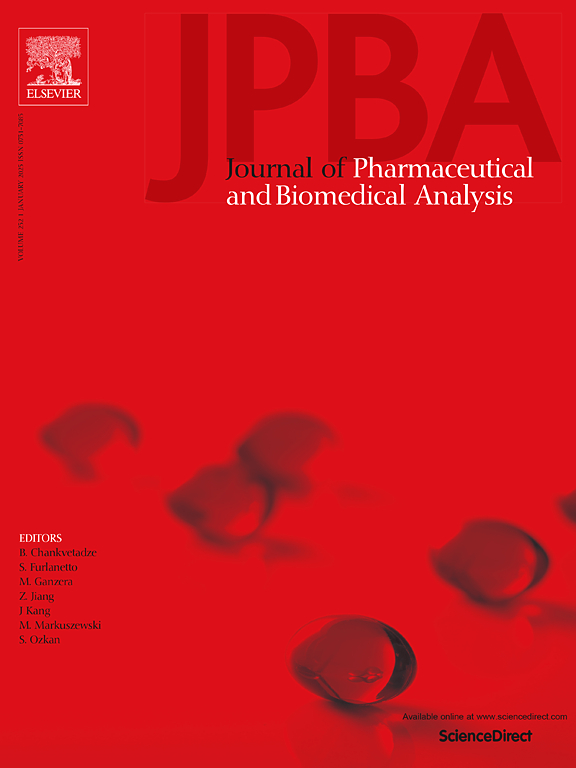Considerations regarding the selection, sampling, extraction, analysis, and modelling of biomarkers in exhaled breath for early lung cancer screening
IF 3.1
3区 医学
Q2 CHEMISTRY, ANALYTICAL
Journal of pharmaceutical and biomedical analysis
Pub Date : 2025-03-03
DOI:10.1016/j.jpba.2025.116787
引用次数: 0
Abstract
Lung cancer (LC) is the deadliest cancer due to the lack of efficient screening methods that detect the disease early. This review, covering the years 2011 – 2025, summarizes state-of-the-art LC screening through analysis of volatile organic compounds (VOCs) in exhaled breath. All fundamental parts of the methodology are covered, i.e., sampling, analysis, and multivariate data modelling. This review shows that breath is commonly collected in Tedlar® bags and subsequently analysed with solid phase micro-extraction gas chromatography mass spectrometry (SPME-GC-MS) or sensors. Data analysis has been made using multivariate methods like principal component analysis (PCA) or artificial neural networks (ANNs). The VOCs exhaled by LC patients and healthy subjects are in principle the same. However, concentration levels differ between the two groups. Therefore, LC patients are usually separated from healthy controls through multivariate modelling of a set of VOC biomarkers rather than by individual biomarkers. Although most exhaled VOCs are formed endogenously via metabolic processes and oxidative stress, some compounds also have exogenous origins, which must be taken into consideration. More than 200 different VOCs have been reported as potential biomarkers in the breath of LC patients, while the number of biomarkers per study were typically around 10–20 compounds. The 15 most common LC biomarkers were (from high to low frequency) acetone, isoprene, hexanal, benzene, butanone, styrene, ethylbenzene, 1-propanol, 2-propanol, toluene, pentanal, 2-pentanone, cyclohexane, nonanal and decane. Several methods showed, in combination with multivariate data analysis, potential to distinguish between LC patients and healthy controls.
求助全文
约1分钟内获得全文
求助全文
来源期刊
CiteScore
6.70
自引率
5.90%
发文量
588
审稿时长
37 days
期刊介绍:
This journal is an international medium directed towards the needs of academic, clinical, government and industrial analysis by publishing original research reports and critical reviews on pharmaceutical and biomedical analysis. It covers the interdisciplinary aspects of analysis in the pharmaceutical, biomedical and clinical sciences, including developments in analytical methodology, instrumentation, computation and interpretation. Submissions on novel applications focusing on drug purity and stability studies, pharmacokinetics, therapeutic monitoring, metabolic profiling; drug-related aspects of analytical biochemistry and forensic toxicology; quality assurance in the pharmaceutical industry are also welcome.
Studies from areas of well established and poorly selective methods, such as UV-VIS spectrophotometry (including derivative and multi-wavelength measurements), basic electroanalytical (potentiometric, polarographic and voltammetric) methods, fluorimetry, flow-injection analysis, etc. are accepted for publication in exceptional cases only, if a unique and substantial advantage over presently known systems is demonstrated. The same applies to the assay of simple drug formulations by any kind of methods and the determination of drugs in biological samples based merely on spiked samples. Drug purity/stability studies should contain information on the structure elucidation of the impurities/degradants.

 求助内容:
求助内容: 应助结果提醒方式:
应助结果提醒方式:


